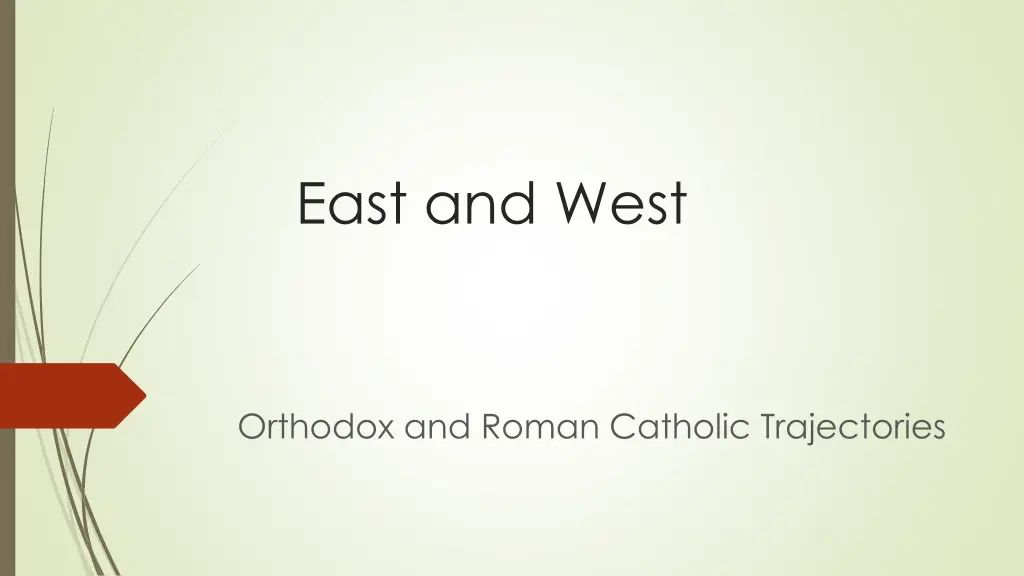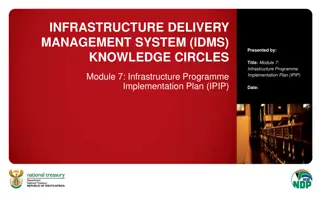
Differences Between Orthodox and Roman Catholic Theology
Explore the theological disparities between Orthodox and Roman Catholic traditions, including views on sin, salvation, atonement, and the nature of humanity. Delve into ecclesial factors, theological orientations, and key differences in beliefs and practices that shape these distinct Christian paths.
Download Presentation

Please find below an Image/Link to download the presentation.
The content on the website is provided AS IS for your information and personal use only. It may not be sold, licensed, or shared on other websites without obtaining consent from the author. If you encounter any issues during the download, it is possible that the publisher has removed the file from their server.
You are allowed to download the files provided on this website for personal or commercial use, subject to the condition that they are used lawfully. All files are the property of their respective owners.
The content on the website is provided AS IS for your information and personal use only. It may not be sold, licensed, or shared on other websites without obtaining consent from the author.
E N D
Presentation Transcript
East and West Orthodox and Roman Catholic Trajectories
Ecclesial Factors Factor Orthodox Roman Catholic Italy, Spain, Northern Europe Latin Liturgy Roman Cross Statues and Altars Papal Primacy Priests and Bishops Clerical Celibacy Unleavened Bread, Affusion Words of Institution as Climax Geography Language Architecture Art Government Spiritual Leaders Marriage Liturgy Eucharist Greece, Egypt, Syria, Russia Vernacular Liturgy Greek Cross Icons and Iconostasis Episcopal Conciliarism Monks and Bishops Clerical Marriages Leavened Bread, Immersion Epiclesis as Climax
Theological Orientations Theology Orthodox Roman Catholic Theological Method Liturgical Mysticism Rational Intellectualism Soteriology Deification (theosis) Forgiveness Mode of Participation Relational Legal Nature of Participation In the Divine Life In the Sacramental Cycle Theological Act Contemplative Deductive Reasoning Goal Union with God Assurance
Key Theological Differences Topic Orthodox Roman Catholic Image of God God created humanity with the potential to grow into the likeness of God. Human beings are born diseased but not guilty. Sin is a malady that needs healing but does not destroy the divine image. Humanity is wounded. It is the renewed process of theosis in order to become like God. God created a perfect world with fully mature and originally righteous human beings. Human beings are both both guilty and corrupt. Sin is a legal infraction that deserves punishment. Humanity has become a criminal. It is the forgiveness of sins and the restoration of original blessedness. Original Sin The Nature of Sin Soteriology
Key Theological Differences Topic Orthodox Roman Catholic Atonement Defeating the powers through incarnation and resurrection. The cross removes the guilt and power of sin through satisfaction. Sacraments To participate in the life of God for renewal in the pursuit of theosis. To receive the forgiveness of sins and receive the gift of God s presence. Ecclesiology The church is the communal means by which theosis is pursued through liturgy and sacrament. The church holds the keys of forgiveness and mediates the grace of God to the world. Eschatology The renewal and transfiguration of creation where God comes to dwell with humanity. Heaven is the restoration of the original Garden of Eden in God s dwelling place beyond the present universe






















